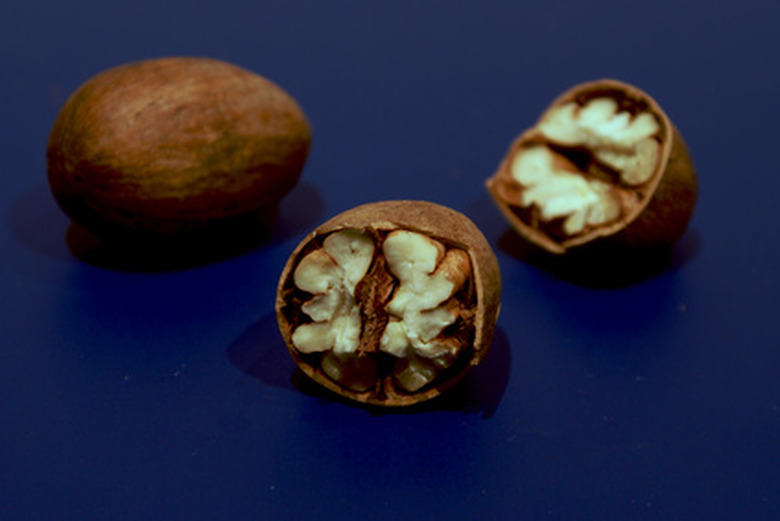How Do I Know If My Pecan Tree Is Dead?
Things Needed
- Magnifying glass
- Penknife
- Shovel
The pecan tree is a Texas native. Like many Texas native plants, it is a hardy, drought-tolerant, easy to care for plant. But just because a pecan tree can take lots of stress does not mean that you cannot kill it. Pecan trees that die from stress typically succumb to a combination of factors, including poor soil depth or drainage, lack of water, bearing too many nuts, freezing, poor management or disease. A pecan tree that is in trouble may not appear to be ill until it is too late. But once a pecan tree is dead, the signs are obvious.
Step 1
Examine the canopy of your tree. If the limbs of the canopy do not produce leaves, or produce leaves that quickly die followed by a second flush of growth that also dies, the tree suffers from freeze damage and large parts of it have already died. Pecan trees never go dormant, so freezing temperatures will freeze the sap and kill a pecan tree.
- The pecan tree is a Texas native.
- Pecan trees never go dormant, so freezing temperatures will freeze the sap and kill a pecan tree.
Step 2
Examine the bark of your tree with a magnifying glass and a penknife. Bark that is split vertically or peeling, but exhibits yellow, moist wood, is only a sign of rapid growth. But if the bark splits vertically and the wood beneath is gray, it is a sign of damage due to freezing.
Step 3
Examine the ground around the tree. If new pecan saplings are growing around the base of the tree, this is a sign that the tree is at least partially dead. A pecan tree sends up new shoots from its roots, which are known as suckers, as a survival strategy when the tree itself dies.
Step 4
Dig a hole around the roots of your pecan tree if the leaves suddenly wilt on the tree in late summer. If the roots are stained red and covered in tiny thread-like fungus, your tree has been killed by cotton root rot.
- Examine the bark of your tree with a magnifying glass and a penknife.
- Dig a hole around the roots of your pecan tree if the leaves suddenly wilt on the tree in late summer.
Tip
Because a pecan tree is a hardy tree, most stress can be corrected if caught in time. Unless a tree is fully dead or suffers from cotton root rot, you can correct problems that plague the tree and save it before it dies. If you suspect your pecan tree is under stress, consult a local pecan grower, nursery or your county extension office for a second opinion to diagnose the problem. Texas A&M University also maintains extensive literature on pecan trees, diseases that affect pecan trees and how to correct problems with pecan trees. Dead pecan trees should be replaced with hearty saplings that are more drought and freeze tolerant, as well as trees that are resistant to cotton root rot.
